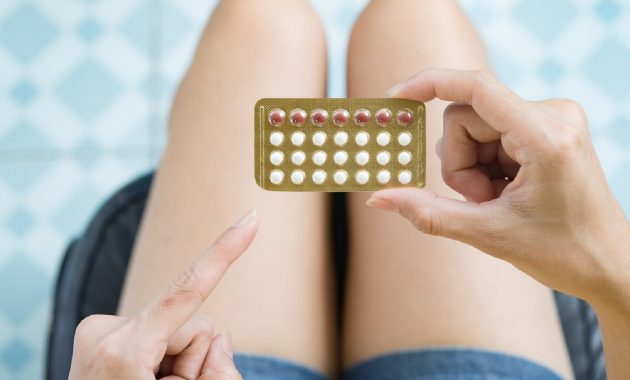There are various blood control methods. They can help to prevent pregnancy, but also have some side effects. As one of the side effects, birth control may cause blood clots.
If you have an active sex life and don’t want a baby anytime soon, it will be natural for you to use birth control methods. Popping birth control pills or using a barrier method like condoms and diaphragms can help prevent pregnancy. Using birth control methods may also come with side effects like breast tenderness, headaches, bloating, and abdominal cramps, as well as increase the risk of blood clots. While birth control causing blood clots is not a very common side effect, one cannot rule out the chances. However, not all birth control methods may lead to blood clots.
What are the birth control methods available?
There are various birth control methods, which can be broadly categorised into the following types:
1. Hormonal methods
These include birth control pills, patches, vaginal rings, injections, and hormonal intrauterine device or IUD. “They work by altering hormone levels to prevent ovulation, thicken cervical mucus, and thin the uterine lining,” explains gynaecologist and obstetrician Dr Vinatha Puli. There are also copper IUDs that prevent sperm from fertilising the egg without using hormones.

2. Barrier methods
These include male as well as female condoms, cervical caps, diaphragms, and contraceptive sponges. This type of contraceptive method physically blocks sperm from reaching the egg to prevent pregnancy.
3. Permanent methods
These include surgical procedures like tubal ligation, commonly known as “getting your tubes tied”, for women, and vasectomy for men. “These methods are considered permanent and are usually irreversible,” says the expert.
You may also like


4. Emergency contraception
These methods include emergency contraceptive pills or morning-after pills, and copper IUDs. They are meant for using after having unprotected sex to prevent pregnancy.
Does birth control cause blood clots?
Blood clots are clumps of blood that look like gel. They get formed after someone gets a cut or an injury. The clots, which get formed inside an injured blood vessel, help stop the bleeding and heal the body. But some of them reach the veins and don’t dissolve naturally. Deep vein thrombosis or DVT is a blood clot in a vein, usually in a person’s leg, and can be dangerous, as per the UK’s National Health Service.
A clot in the vessels can take blood into a person’s lungs, known as a pulmonary embolism. It can be fatal as it can stop blood from getting to the lungs. The incidence of pulmonary embolism ranges between 39 and 115 per 100,000 population in a year, according to a research published in StatPearls in February 2024.
A blood clot affects about 1 in 1,000 people who use combined hormonal contraception, which contains oestrogen and progestogen, as per the NHS. “Hormonal birth control methods, especially the ones that have estrogen, are associated with an increased risk of blood clots,” says Dr Puli. These include:
- Combination birth control pills, which have both the progestin and estrogen hormones.
- Contraceptive patches, which release estrogen and progestin through the skin.
- Vaginal rings such as the NuvaRing, which releases a combination of estrogen and progestin.
Birth control methods with only progestin do not increase the risk of blood clots, as per research published in the Haematologica journal in 2016. “Estrogen increases the levels of certain proteins in the blood that promote clotting,” says Dr Puli. Hormonal birth control can also lead to changes in the blood vessels’ lining, which makes it easier for blood clots to get formed.
What are the signs of birth control causing blood clots?
Blood clots can be life-threatening, so it is crucial to recognise the signs early. Common signs of birth control causing blood clots are:
- Swelling usually in one leg, which may also feel warm or tender.
- Sudden or severe pain in the leg, often in the calf.
- Red or discoloured skin, particularly on the affected leg.
- Sudden or unexplained difficulty in breathing.
- Sharp pain in the chest that may get worse while breathing deeply.
- Unexplained coughing, sometimes with blood.
- Feeling lightheaded or fainting.

How to prevent blood clots due to birth control?
To reduce the risk of blood clots while using hormonal birth control, do the following:
- Ask your doctor about birth control methods with lower estrogen levels or progestin-only options.
- Maintain a healthy weight, and stay physically active to reduce overall clotting risk.
- Drink plenty of water to keep your blood flowing smoothly in the body.
- If you have a family history of blood clots, or other risk factors such as obesity, discuss them with your doctor.
What to do if birth control causes blood clots?
If you suspect that you have a blood clot due to birth control, go to a hospital if you experience any symptoms of blood clot. Also, stop using the hormonal birth control. “A doctor will give you anticoagulant or blood-thinning medications to help prevent the clot from growing and reduce the risk of new ones forming,” says the expert.
Birth control methods can help to prevent unwanted pregnancy, but there are side effects like blood clots. Know the risks and signs of blood clots while using hormonal birth control, and discuss your personal risk factors with your doctor before starting any birth control method.
#birth #control #increase #risk #blood #clots
